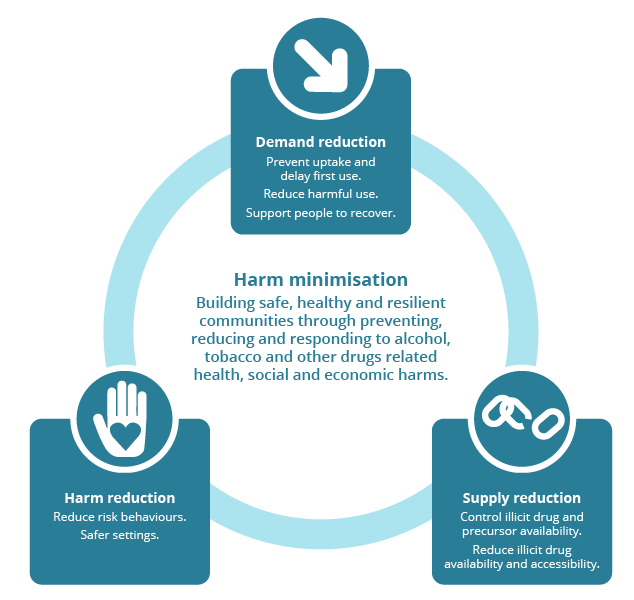Harm minimisation
Since the 1985 launch of the National Campaign Against Drug Abuse (NCADA) (now the National Drug Strategy), Australia has adopted a harm minimisation approach for addressing a range of issues associated with the use of tobacco, alcohol and other drugs. The approach recognises that drug use is a complex phenomenon that will never be entirely eliminated, and that people who use drugs should be supported to progressively reduce harms to themselves and the wider community (Department of Health 2017; UNODC 2008). The National Drug Strategy 2017–2026 focuses on reducing harms using 3 approaches: demand reduction; supply reduction; and harm reduction (Figure HARM1).
See also the National Alcohol Strategy 2019–2028.
Figure HARM1: Three pillars of harm minimisation

References
Department of Health 2017. National Drug Strategy 2017–2026. Canberra: Australian Government. Viewed 12 January 2018.
UNODC (United Nations Office of Drugs and Crime) 2008. Drug policy and results in Australia (PDF). Viewed 14 December 2017.


